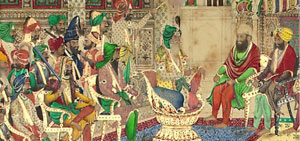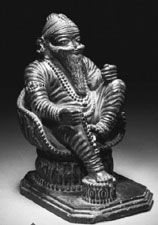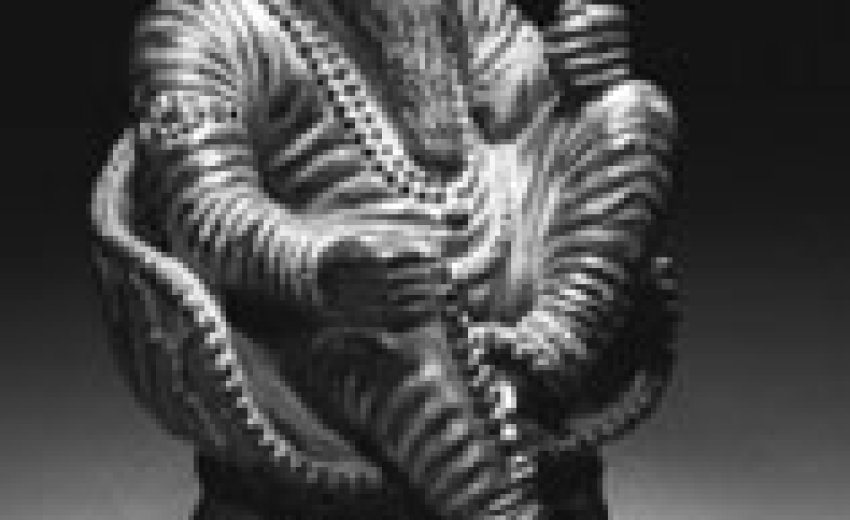 Two breathtaking pieces will be the Sikh highlights of the Christie’s “Art of the Islamic and Indian World” sale on 7 October 2008 in London. The stunning court scene depicting Ranjit Singh and the principle figures of the Lahore Durbar is one of the most stunning Sikh paintings that has been offered for sale in recent years.
Two breathtaking pieces will be the Sikh highlights of the Christie’s “Art of the Islamic and Indian World” sale on 7 October 2008 in London. The stunning court scene depicting Ranjit Singh and the principle figures of the Lahore Durbar is one of the most stunning Sikh paintings that has been offered for sale in recent years.
Set in the Fort of Lahore Ranjit Singh is depicted sitting towards the centre on his gold throne surrounded by brightly clad family members and courtiers. In the background is a hilly landscape and an amazing attention to detail with encampments, marching soldiers and field gun practice.
Also known as the Lion of the Punjab, Ranjit Singh is the man who, after the Gurus, commands the greatest respect amongst the Sikhs. In 1799 Ranjit Singh captured the Fort of Lahore (built by the Mughal Emperor Akbar in the 1560s) and was declared Maharaja shortly after in 1800. The present painting depicts the Durbar in the Fort of Lahore in immaculate detail, down to the minute precision of the pietra dura decoration of the architecture with its gold tooled embellishments.
On the left of the seated maharaja are his family members, in order of their relative importance, Kharak Singh (1801-1840), Sher Singh (1807-1843), Nau Nihal Singh (1821-1840), the infant Duleep Singh (1838-1893) and Kashmira Singh and Peshaura Singh.
Recognisable courtiers to the right of the Maharaja are the three Dogra brothers and Raja Tej Singh. The figure with whom Ranjit Singh is in conversation is difficult to identify but could be Bhai Gurmukh Singh, the son of the Guardian of the Harimandir Sahib, Giani Sant Singh, who enjoyed a central role in Ranjit Singh’s and in particular Sher Singh’s court.
Missing from this scene is any reference to Hari Singh Nalwa and the normally recognisable Akali Phula Singh. As Christie’s also point out: ‘It is interesting in that we see the way that the army was styled on European lines by his French General, Allard, who joined him after the demise of Napoleon's armies. In contrast however, not a single one of the key Europeans in senior positions in Ranjit Singh's court are depicted. Whilst the French-inspired uniforms are painted with a high degree of accuracy, Bishan Singh, as a devout Sikh, no doubt adopted a puritanical view of the court and would have seen it as an affair not to be marred by a European presence.’
The painting is signed in Gurumuki on a fragment of the surviving cover sheet, 'Bishan Singh Musavar Bannee'. Works of art of this quality and age from a recognisable Sikh artist are exceptionally rare to see, and this makes this painting especially exciting.
Christies experts explained: ‘Bishan Singh, also known as Baba Bishan Singh, came from a family of artists operating in Lahore and Amritsar in the second half of the 19th century. The family were responsible for painting and maintaining the murals and motifs on the walls of the Sikh holiest shrine, the Golden Temple and it is there that Bishan (and his brother Kishan Singh) learnt his trade. Bishan Singh became particularly famous for his detailed depictions of the Court of Maharaja Ranjit Singh (1780-1839).’
The provenance of this piece is equally exciting continued Christies: “At the exhibition of arts and crafts held at Lahore in 1864, Bishan Singh showed ten pictures including 'darbars of Ranjit Singh, Sher Singh and the Municipal Committee, Amritsar' These attracted the attention of Baden-Powell and Percy Brown who commented that 'the perspective of the buildings is incorrect but the figure drawing is admirable. The color is tasteful and rich and likenesses are good and the expression is varied and truthful'” Unable to rival the bust of Ranjit Singh in scale or breathtaking beauty, Christies do have on offer another exceptionally scarce piece of Sikh sculpture. Depicting Ranijt Singh in the famous golden throne, this intriguing sculpture is redolent of Emily Eden’s description of the Maharaja when she saw him in 1838: ‘He retained a perfect simplicity rather than plainness of appearance, while his chiefs and courtiers around him wore the most brilliant draperies and rich profusions of jewels. His manners were always quiet. He had a curious and constant trick, while sitting engaged in conversation, of raising one of his legs under him on the chair and then pulling off the stocking from that foot.’
Unable to rival the bust of Ranjit Singh in scale or breathtaking beauty, Christies do have on offer another exceptionally scarce piece of Sikh sculpture. Depicting Ranijt Singh in the famous golden throne, this intriguing sculpture is redolent of Emily Eden’s description of the Maharaja when she saw him in 1838: ‘He retained a perfect simplicity rather than plainness of appearance, while his chiefs and courtiers around him wore the most brilliant draperies and rich profusions of jewels. His manners were always quiet. He had a curious and constant trick, while sitting engaged in conversation, of raising one of his legs under him on the chair and then pulling off the stocking from that foot.’
The auctioneer describes the statue as “a Green Steatite Carved Statue of Ranjit Singh. On stepped rectangular base, delicately carved with Maharaja Ranjit Singh sitting in typical pose on his rounded wicker chair, his right foot resting on a footstool in front of him and his left lifted on to the chair, the eyes inlaid with mother-of-pearl, some minor chipping.
For full details and further images please visit the Christies website

